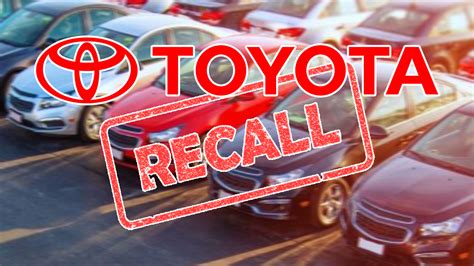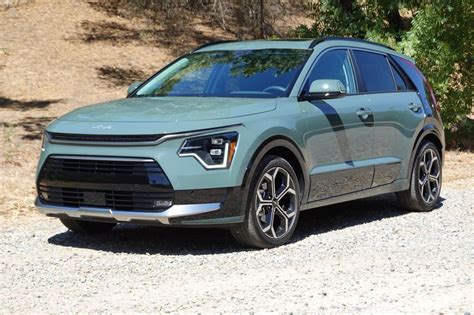
Toyota is recalling more than 440,000 vehicles in the United States due to a software issue that can disable the Vehicle Stability Control (VSC) system, increasing the risk of a crash. The recall affects certain 2022-2023 Toyota Tundra, Tundra Hybrid, Lexus LX600, and 2023 Sequoia models. Owners will be notified by late April and urged to bring their vehicles to a dealer for a free software update.
Toyota Recalls Over 440,000 Vehicles in the US for Stability Control Defect
Toyota Motor North America announced a recall affecting approximately 440,577 vehicles in the United States due to a software malfunction that could compromise the Vehicle Stability Control (VSC) system. The recall encompasses specific models from the 2022-2023 model years, including the Toyota Tundra, Tundra Hybrid, Lexus LX600, and 2023 Sequoia. According to a statement released by Toyota, a software error within the VSC system can lead to its deactivation during vehicle operation, thereby negating its intended function of maintaining stability and control, especially in challenging driving conditions.
“In the involved vehicles, the Vehicle Stability Control (VSC) system may be deactivated when the vehicle is started,” Toyota stated. “If this occurs, the VSC off indicator will illuminate, and the vehicle may not comply with certain federal motor vehicle safety standards. A deactivated VSC system could increase the risk of a crash.”
The recall underscores the critical role of software in modern automotive safety systems. VSC, an electronic stability control system, is designed to prevent skidding and loss of control by automatically applying brakes to individual wheels and adjusting engine power when the system detects a loss of traction or stability. Its deactivation can significantly increase the risk of accidents, particularly in adverse weather conditions or during emergency maneuvers.
Toyota is expected to notify affected vehicle owners by late April 2024. The notification will instruct owners to schedule an appointment with an authorized Toyota or Lexus dealer to have the VSC system software updated free of charge. The software update is designed to rectify the error and ensure the VSC system functions as intended.
Detailed Explanation of the VSC Defect and its Implications
The core of the recall lies in a specific software flaw that can sporadically disable the VSC system upon vehicle startup. This means that, under certain circumstances, the vehicle’s stability control system might not be active when the driver begins operating the vehicle. The “VSC off” indicator light on the dashboard will illuminate if the system is deactivated, alerting the driver to the potential issue. However, there is a risk that drivers may not immediately notice the warning light, especially under normal driving conditions where the need for VSC intervention might not be apparent.
The deactivation of the VSC system has significant implications for vehicle safety. VSC is a crucial component of modern automotive safety, especially for larger vehicles like the Tundra, Sequoia, and LX600. It utilizes sensors to monitor various parameters such as steering angle, wheel speed, and yaw rate to detect when the vehicle is deviating from its intended path. If the system detects a loss of control, it intervenes by applying braking force to individual wheels and reducing engine power to help the driver regain control.
In situations such as driving on slippery surfaces, executing emergency maneuvers, or navigating sharp turns, a functioning VSC system can be the difference between maintaining control and experiencing a skid or rollover. Without VSC, the vehicle becomes more susceptible to loss of control, particularly for less experienced drivers or in challenging driving conditions. This potential increase in crash risk is the primary reason for the recall.
Affected Vehicle Models and Production Dates
The recall specifically targets the following models:
- 2022-2023 Toyota Tundra: This includes all trim levels and configurations of the Tundra produced during this period.
- 2022-2023 Toyota Tundra Hybrid: This encompasses the hybrid variant of the Tundra, which combines a gasoline engine with an electric motor for improved fuel efficiency and performance.
- 2022-2023 Lexus LX600: The flagship SUV of the Lexus brand, known for its luxury, off-road capability, and advanced technology features.
- 2023 Toyota Sequoia: The full-size SUV from Toyota, offering spacious seating and cargo capacity, as well as towing capability.
It’s important for owners of these models to verify if their specific vehicle is affected by the recall. Toyota will provide a VIN (Vehicle Identification Number) lookup tool on its website, allowing owners to enter their VIN and determine if their vehicle is included in the recall. The recall encompasses vehicles manufactured within specific production date ranges. While the precise production dates are not explicitly mentioned in the Yahoo! Autos article, Toyota will provide this information through its official recall notices and VIN lookup tool.
Toyota’s Response and Remedy
Toyota has stated that it will conduct the recall in a proactive manner, contacting affected vehicle owners via mail. The notification will instruct owners to bring their vehicles to an authorized Toyota or Lexus dealer. At the dealership, technicians will perform a software update to rectify the VSC system issue. This software update will be performed free of charge to the vehicle owner.
The software update is designed to reprogram the VSC system’s control module, ensuring that the system functions correctly upon vehicle startup and remains active during operation. The update should prevent the VSC system from being inadvertently deactivated due to the software flaw.
Toyota has not provided a specific timeline for the completion of the recall, but owners are encouraged to schedule their service appointments as soon as they receive notification. Dealerships are expected to be prepared to handle the influx of vehicles requiring the software update.
The Importance of Vehicle Stability Control Systems
Vehicle Stability Control (VSC), also known as Electronic Stability Control (ESC), is an active safety system designed to prevent skidding and loss of control in vehicles. It has become a standard feature on most modern vehicles and is widely recognized as a significant advancement in automotive safety.
VSC systems use a network of sensors to monitor the vehicle’s direction and movement. These sensors include:
- Wheel speed sensors: Measure the rotational speed of each wheel.
- Steering angle sensor: Detects the angle of the steering wheel.
- Yaw rate sensor: Measures the vehicle’s rotation around its vertical axis.
- Lateral acceleration sensor: Measures the vehicle’s sideways acceleration.
By analyzing the data from these sensors, the VSC system can determine if the vehicle is deviating from its intended path. If a loss of control is detected, the system intervenes by applying braking force to individual wheels and adjusting engine power to help the driver regain control.
For example, if the system detects that the vehicle is starting to oversteer (the rear of the vehicle is sliding out), it may apply braking force to the outside front wheel to help pull the vehicle back into line. Similarly, if the system detects that the vehicle is starting to understeer (the vehicle is not turning as much as the driver intends), it may apply braking force to the inside rear wheel to help rotate the vehicle.
VSC systems are particularly effective in preventing accidents in challenging driving conditions such as:
- Slippery surfaces: Rain, snow, ice, and gravel can reduce traction and increase the risk of skidding.
- Emergency maneuvers: Sudden braking or steering inputs can cause the vehicle to lose control.
- Sharp turns: Taking turns too quickly can cause the vehicle to roll over.
Studies have shown that VSC systems can significantly reduce the risk of single-vehicle crashes, particularly rollovers. The National Highway Traffic Safety Administration (NHTSA) estimates that ESC systems have saved thousands of lives since becoming widespread.
Broader Context of Automotive Recalls
Automotive recalls are a common occurrence in the industry, affecting vehicles from all manufacturers. Recalls are typically initiated when a defect is discovered that could compromise vehicle safety or compliance with federal motor vehicle safety standards. These defects can range from minor issues such as faulty wiring to major problems such as defective airbags or braking systems.
Manufacturers are required to notify NHTSA when they discover a safety-related defect or a noncompliance issue. NHTSA then reviews the information and determines whether a recall is necessary. If a recall is ordered, the manufacturer is responsible for notifying vehicle owners and providing a remedy free of charge.
Recalls can be costly for manufacturers, both in terms of direct costs such as repairs and replacement parts, and in terms of reputational damage. However, manufacturers have a legal and ethical obligation to address safety defects and protect the public.
In recent years, there has been an increasing number of recalls related to software issues in vehicles. As vehicles become more complex and rely more heavily on software for various functions, the risk of software-related defects has also increased. This Toyota recall highlights the importance of rigorous testing and validation of automotive software to ensure vehicle safety and reliability.
Historical Toyota Recalls
Toyota has faced several major recalls throughout its history, some of which have significantly impacted the company’s reputation and financial performance.
One of the most significant was the 2009-2010 recall related to unintended acceleration. This recall involved millions of Toyota vehicles and was attributed to two main issues: floor mats that could trap the accelerator pedal and a sticky accelerator pedal mechanism. The recall led to extensive investigations, government scrutiny, and significant financial losses for Toyota.
In 2014, Toyota was also involved in the massive Takata airbag recall, which affected numerous automakers worldwide. Defective Takata airbags could explode with excessive force, sending shrapnel into the vehicle cabin and causing serious injuries or fatalities. Toyota recalled millions of vehicles to replace the defective airbags.
These past recalls have underscored the importance of quality control and safety in the automotive industry and have prompted Toyota to strengthen its internal processes and safety measures.
Impact on Toyota’s Reputation
Recalls can have a negative impact on a manufacturer’s reputation, particularly if they involve safety-related defects. Consumers may lose confidence in the brand and be less likely to purchase their vehicles in the future.
Toyota has worked hard to rebuild its reputation after past recalls. The company has invested in improving its quality control processes and has been more proactive in addressing potential safety issues. However, recalls like this one can still damage the company’s image and affect sales.
The extent of the impact on Toyota’s reputation will depend on how effectively the company handles the recall and communicates with its customers. If Toyota can quickly and efficiently resolve the issue and provide excellent customer service, it may be able to minimize the negative impact on its reputation.
Steps for Owners of Affected Vehicles
If you own a 2022-2023 Toyota Tundra, Tundra Hybrid, Lexus LX600, or 2023 Sequoia, it’s important to take the following steps:
- Check Your VIN: Visit Toyota’s website and use the VIN lookup tool to determine if your vehicle is affected by the recall.
- Wait for Notification: Toyota will notify affected vehicle owners by late April 2024.
- Schedule an Appointment: Once you receive notification, contact your local Toyota or Lexus dealer to schedule an appointment for the software update.
- Follow Dealer Instructions: Follow the dealer’s instructions regarding the recall and the software update.
- Monitor the VSC Indicator: Pay attention to the “VSC off” indicator light on your dashboard. If the light illuminates, it indicates that the VSC system is deactivated.
- Drive with Caution: If your vehicle is affected by the recall, drive with extra caution, especially in challenging driving conditions.
- Contact Toyota Customer Service: If you have any questions or concerns, contact Toyota customer service for assistance.
FAQ: Toyota VSC Recall
Q1: What vehicles are affected by the Toyota VSC recall?
A1: The recall affects certain 2022-2023 Toyota Tundra, 2022-2023 Toyota Tundra Hybrid, 2022-2023 Lexus LX600, and 2023 Toyota Sequoia models in the United States.
Q2: What is the problem with the Vehicle Stability Control (VSC) system?
A2: A software error can cause the VSC system to be deactivated upon vehicle startup. If this occurs, the VSC off indicator will illuminate, and the vehicle may not comply with certain federal motor vehicle safety standards. A deactivated VSC system could increase the risk of a crash.
Q3: How will I know if my vehicle is affected by the recall?
A3: Toyota will notify affected vehicle owners by late April 2024. You can also check your vehicle’s VIN (Vehicle Identification Number) on Toyota’s website using a VIN lookup tool to determine if your vehicle is included in the recall.
Q4: What should I do if my vehicle is affected by the recall?
A4: Once you receive notification from Toyota, schedule an appointment with an authorized Toyota or Lexus dealer to have the VSC system software updated free of charge.
Q5: How much will the software update cost?
A5: The software update will be performed free of charge to the vehicle owner. Toyota will cover the cost of the update as part of the recall.









